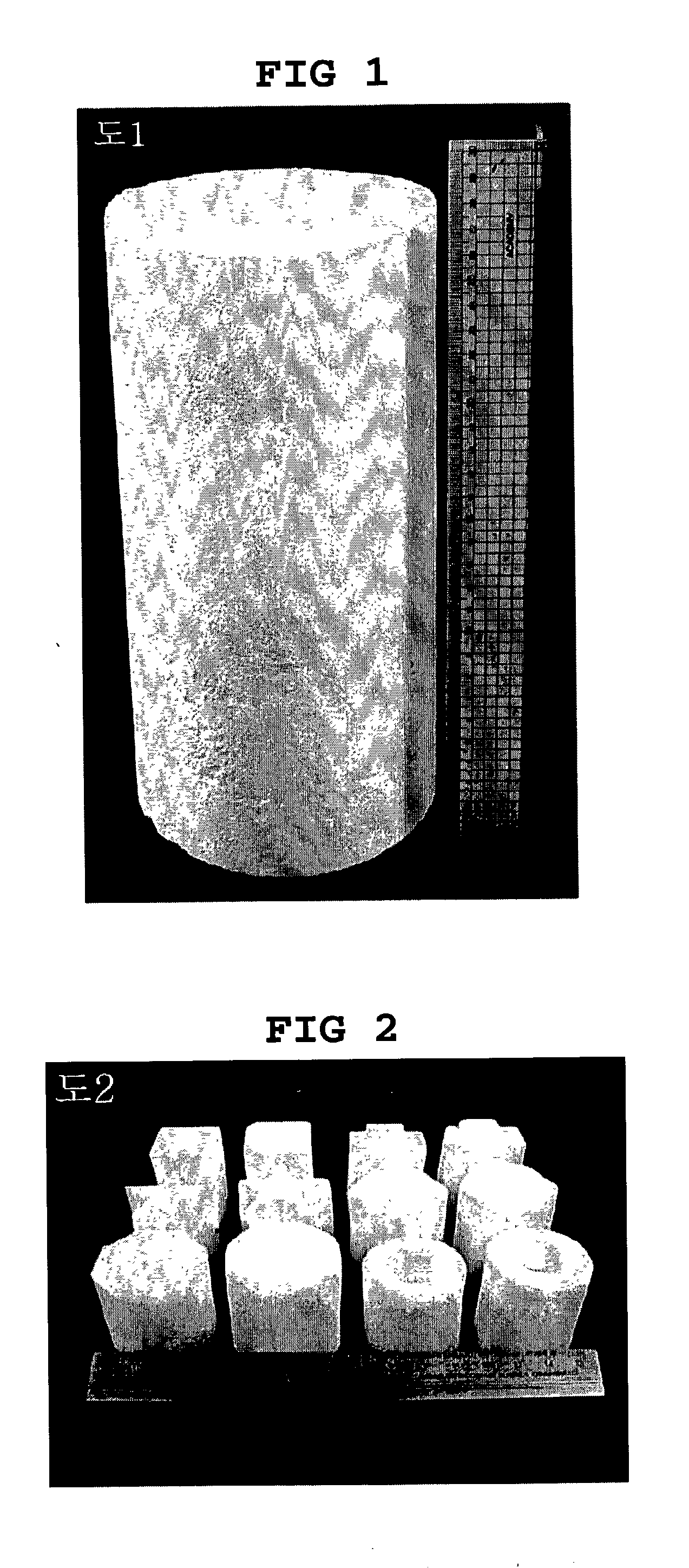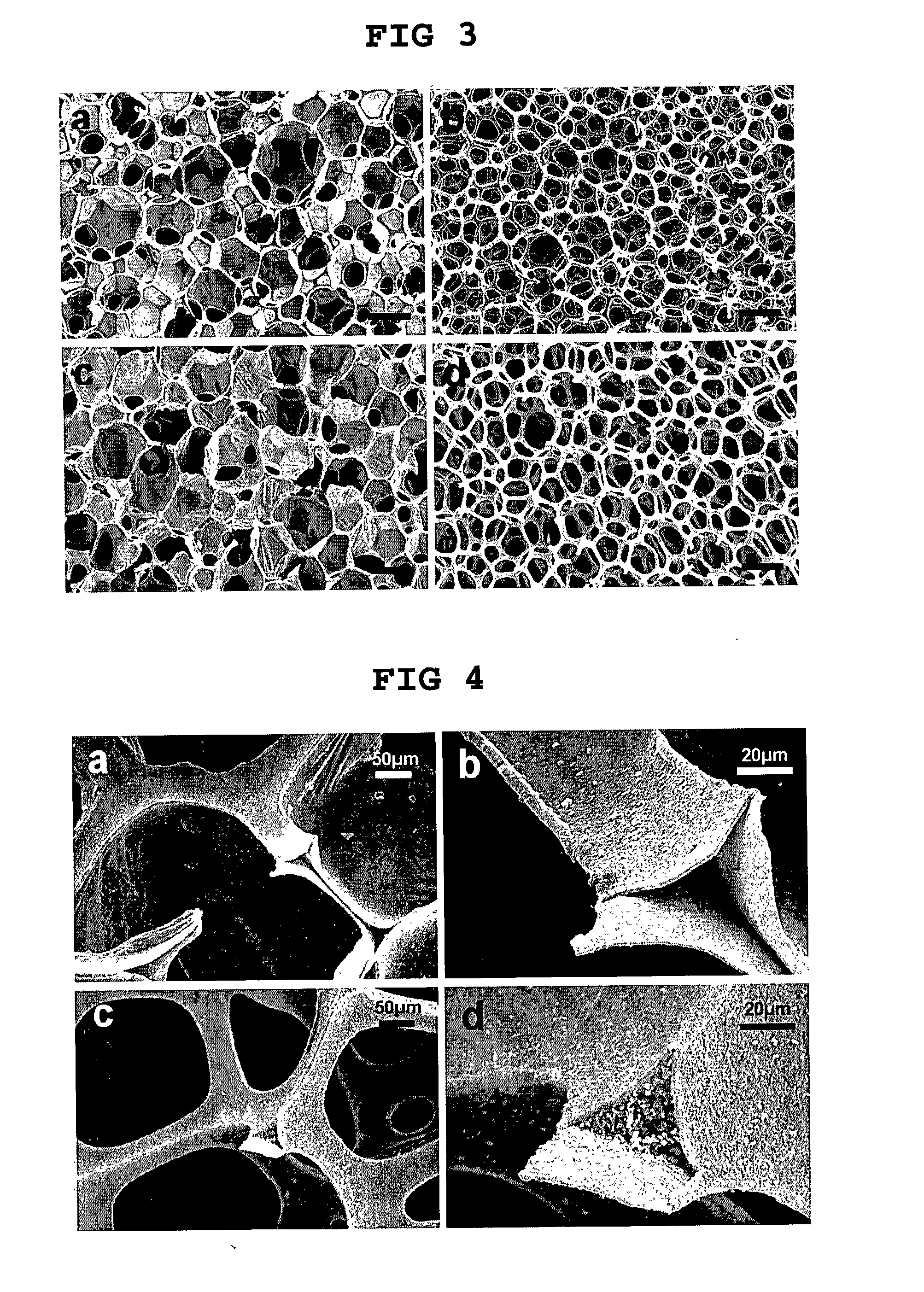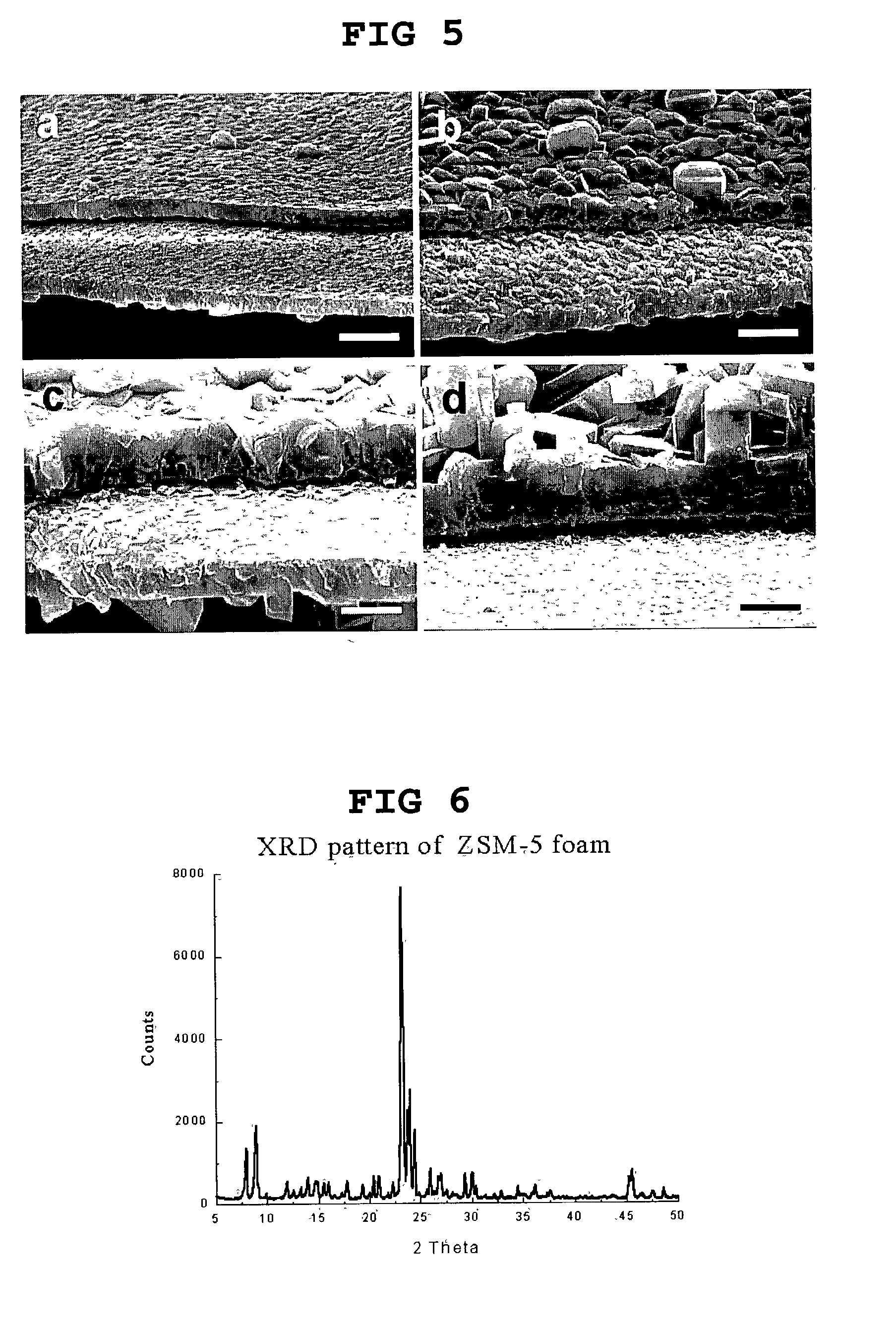Macroporous foams comprising microporous zeolite or zeotype material and preparation thereof by using polymeric templates having sponge structure
- Summary
- Abstract
- Description
- Claims
- Application Information
AI Technical Summary
Benefits of technology
Problems solved by technology
Method used
Image
Examples
example 1
Preparation of a Silicalite-1 Foam Using a Polyurethan Sponge as a Template
[0101] A 1M solution of tetrapropylammoniumhydroxide (TPAOH), which is used as a template for the preparation of zeolite or zeotype material such as zeotype material having a structure of MFI configuration, is added to 100 g of distilled water, to which 25 g of tetraethyl orthosilicate (TEOS) is added as silicone source and completely hydrolyzed under stirring.
[0102] In 30 g of the resulted colorless and transparent gel for the preparation of silicalite-1, 0.4 g of a polyurethane sponge having a suitable size is dipped to be soaked with the gel. The resulted sponge is then subjected to a synthetic reaction in an autoclave at 80.about.250.degree. C. for 2 days. After the reaction, the resulted silicalite-1 foam is washed with distilled water and acetone. The weight of foam thus finally obtained is about 2 g.
example 2
Preparation of a ZSM-5 Zeolite Foam Using a Polyurethane Sponge as a Template
[0103] The same procedure as described in Example 1 is repeated to prepare a foam product, except that 0.65 g of sodium aluminate (NaAlO.sub.2) as aluminum source is further added to the gel for the preparation of silicalite-1 in order to synthesize ZSM-5 zeolite.
[0104] The ratio of silicon to aluminum in the synthetic gel thus prepared is about 25:1.
example 3
Preparation of a TS-1 Foam Using a Polyurethane Sponge as a Template
[0105] The same procedure as described in Example 1 is repeated to prepare a foam product, except that 0.67 g of titanium tetraisopropoxide as titanium source and 10 ml of isopropanol are further added to the gel for the synthesis of silicalite-1 in order to synthesize TS-1 type molecular sieve.
[0106] The ratio of silicon to titanium in the synthetic gel thus prepared is about 50:1.
PUM
| Property | Measurement | Unit |
|---|---|---|
| Temperature | aaaaa | aaaaa |
| Structure | aaaaa | aaaaa |
| Shape | aaaaa | aaaaa |
Abstract
Description
Claims
Application Information
 Login to View More
Login to View More - R&D
- Intellectual Property
- Life Sciences
- Materials
- Tech Scout
- Unparalleled Data Quality
- Higher Quality Content
- 60% Fewer Hallucinations
Browse by: Latest US Patents, China's latest patents, Technical Efficacy Thesaurus, Application Domain, Technology Topic, Popular Technical Reports.
© 2025 PatSnap. All rights reserved.Legal|Privacy policy|Modern Slavery Act Transparency Statement|Sitemap|About US| Contact US: help@patsnap.com



